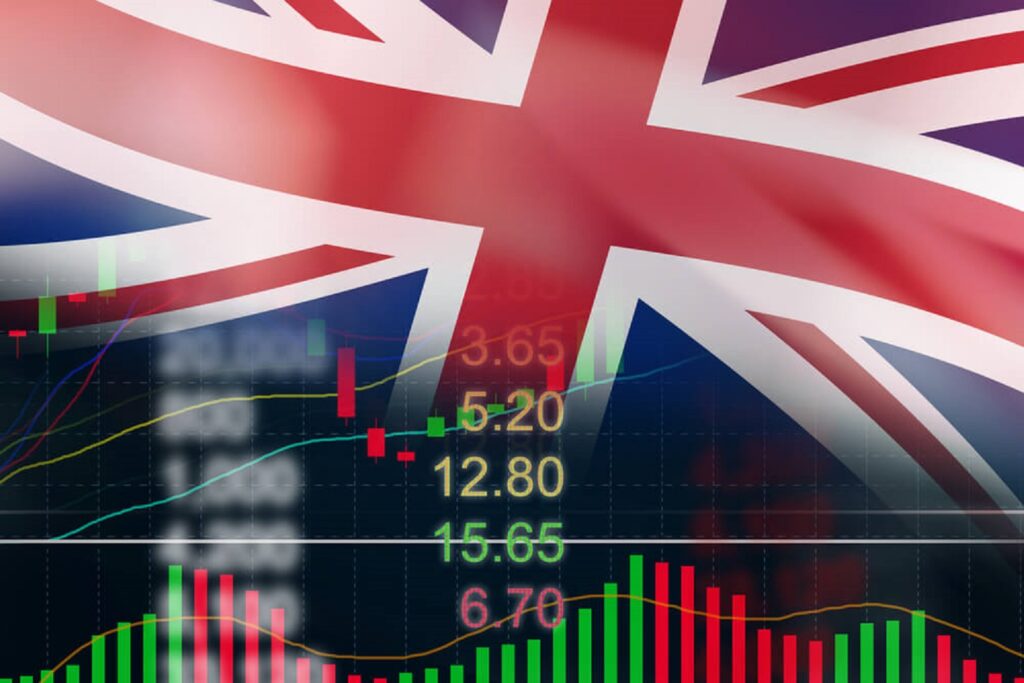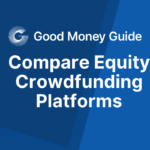This guide looks at some of the best investments for UK investors in 2025.
In the prior 12 months, thematic plays were all the rage. Artificial Intelligence, crypto (GMG guide), and US stocks spearheaded the powerful rise in asset prices. The ‘Trump Trade’ roared back with a vengeance following Trump’s decisive election win. Some European stocks, especially German DAX, put on a decent showing in 2024 too. Casting our eyes further, Japan and India both hit fresh highs during the year. This shows that international markets can rack up strong gains for investors.
In the UK, the equity market performed reasonably well. The FTSE 100 hit new all-time highs at some point last year, but a consistent uptrend after that was noticeably absent. With Trump in the White House, what and where should you invest if you’re based in the UK? Here we highlight some of the best potential investments for 2025.
The most popular asset class in the UK, outside property, are stocks, funds, commodities and bonds. The rule of thumb here is that you allocate your capital according to your needs. Investors who want a diverse portfolio mostly invest in all four. Only the percentages differ. A lower tolerance for risk means more bond weightings and less shares – and vice versa. For risk-seeking investors, a venture into the land of crypto is a distinct possibility. Better potential returns, but higher risk. To be sure, there is no ‘right’ allocation for everyone – only the right allocation for you.
These are the best investment asset classes to invest in for UK investors:
UK Shares
The UK stock market is one of the best-known in the world. On the London Stock Exchange platform, itself a listed company (ticker: LSEG), sits many world-class institutions with origins dating back to the nineteenth century.
What are the best UK shares?
- Financial sector – such as HSBC (HSBA), Barclays (BARC), Lloyds (LLOY), Standard Chartered (STAN), Aviva (AV.)
- Industrial Players – such as Rolls Royce (RR.), Smiths Group (SMIN) or IMI (IMI). New highs for the latter two.
- Resource-rich firms – including Rio Tinto (RIO), Anglo American (AAL), Antofagasta (ANTO)and Glencore (GLEN); on energy, we have Shell (SHEL) and BP (BP.) Note, BP has been underperforming SHEL and is now £100 billion smaller.
- Lack of tech stocks – this means investors who wish to have exposure to the booming sector have to buy them elsewhere. Even ARM (ARM:US), now listed on Nasdaq.
- Few large-cap growth stocks – the UK market is overweight on value-oriented stocks.
- Low capital growth – the FTSE 100 Index has been advancing at a leisurely pace in recent years,
In sum, some exposure to UK stocks may be desired, although one has to be patient in realising the returns amidst the shifting political and economic landscape on this Great Isle of ours.
- Related Guide: Best Investment Apps For UK Shares
US Stocks
The American stock market is in a league of its own.
US equities ended 2024 with a total market capitalisation of $63 trillion dollars. A staggering sum. More than half of the global value of stocks now reside in America. Buying US Stocks is thus indispensable to most global investors as the market is too large to ignore.
Out of the ten largest stocks in the world at this point, nine are found in the US. These mega-cap companies, aka the ‘Magnificent Seven‘, are all trillion-dollar stocks.* Together, this group occupies more than a third of the entire S&P 500 index. Last year, their average return was a stunning 67 percent, more than twice the return of Nasdaq 100 or S&P.
*Mag7: Apple (AAPL), Microsoft (MSFT), Nvidia (NVDA), Google (GOOG), Amazon (AMZN), Meta (META) and Tesla (TSLA).

Source: Nasdaq.com
What makes US stocks such good investments?
- Bullish price momentum – take a look at the Nasdaq 100 Index. Its price strength seems to defy the economic gravity and the burden of high-interest rates.
- Profitable tech stocks – particularly the ‘Mag7’ companies. Most of them reported billions of profits. Much of that goes to share buybacks. Apple bought $110 billion of its stocks last year. That’s how cash-rich these companies are right now.
- Stronger-than-expected economy – Data are showing a strong US economy. This is keeping up corporate profits and with it, the valuation of the US companies.
However, there are some drawbacks in buying US stocks now:
- US stocks are optimistically valued. This rosy outlook may or may not materialise in the year ahead. Any disappointment like earnings growth could hit these lofty stock prices hard.
- Other stocks elsewhere are ‘cheaper’. Admittedly, these lower valued stocks have poorer accompanying fundamentals such as lower earnings expectations.
- A less accommodative Fed. The monetary easing that many investors are anticipating (ie, multiple rate cuts in 2025) may not unfold at the timeline they envisaged, given the ongoing market rallies and firm economic data. Higher rates may dent future stock returns.
- Unpredictable White House. This could be contentious point, but the new president has made controversial policies in the past (Trump 1.0) and may repeat this pattern in the next few months.
Still, investors should have some exposure to some US stocks given their positive technical conditions and outlook, as Warren Buffett once opined: ‘Never bet against America.’
ETFs
Exchanged-Traded Funds (ETFs) are one of the fastest-growing areas of the financial markets. Investors like them because they are cheap, transparent and offer easy access in terms of coverage. Even sophisticated hedge funds trade ETFs because of their deep liquidity. Global ETF assets last year topped $15 trillion.
Advantages of investing in ETFs are:
- Diversification – With just a few ETFs, you can easily diversify your portfolio across asset classes. In the past, you bought stocks and gilts separately, topped up with a vault full of physical gold coins. Now, you can buy a stock (SPY:US), a bond (BND:US) and a gold ETF (GLD:US) – all in the same account.
- Overseas markets – exposure can be acquired easily, region ETFs like emerging markets (EEM:US) or a single country market (eg, China FXI:US).
- Thematic exposure – is investable since stocks with similar characteristics can be packaged together, eg FirstTrust Cloud Computing (SKYY:US).
- Short ETFs are available – for more opportunistic traders. One such ETF is the ProShares Ultra Short QQQ (SQQQ), which benefits from a fall in QQQ. Note that these short (or inverse) ETFs are for trading rather than long-term investment.
The growth of ETFs is closely associated with passive Index Funds. That is, investors buy the market via a popular market index ETF. Why, you wonder, are index funds favoured across the world?
- Reduces the risk of active management. Many investors prefer the simplicity of just buying a major market index instead of trying to find a ‘star’ fund manager.
- Stay invested in the biggest stocks – as major stocks indices undergo regular “reshuffling”. Weak stocks are automatically phased out from the index.
- Capture the upside with less transaction costs – transaction costs and expensive fees erode long-term returns.
Compare Index Fund Investing Accounts
On thematic and style funds, some popular ETFs in recent months include some of the following:
- iShares Bitcoin ETF (IBIT:US, factsheet) – now one of the biggest ETFs on Wall Street, with $60 AUM
- Invesco S&P 500 Equal Weight (RSP:US) – to move from the excessive concentration of tech stocks
- Vanguard Dividend Appreciation (VIG:US)
Given the size of the US market, ETFs with huge AUMs are located on US exchanges. SPY, for instance, is the world’s largest ETF with $635 billion in assets. Naturally some of these ETFs have been packaged on the LSE platform for UK investors, such as EUSA, EQQQ, SGLN or SMGB.
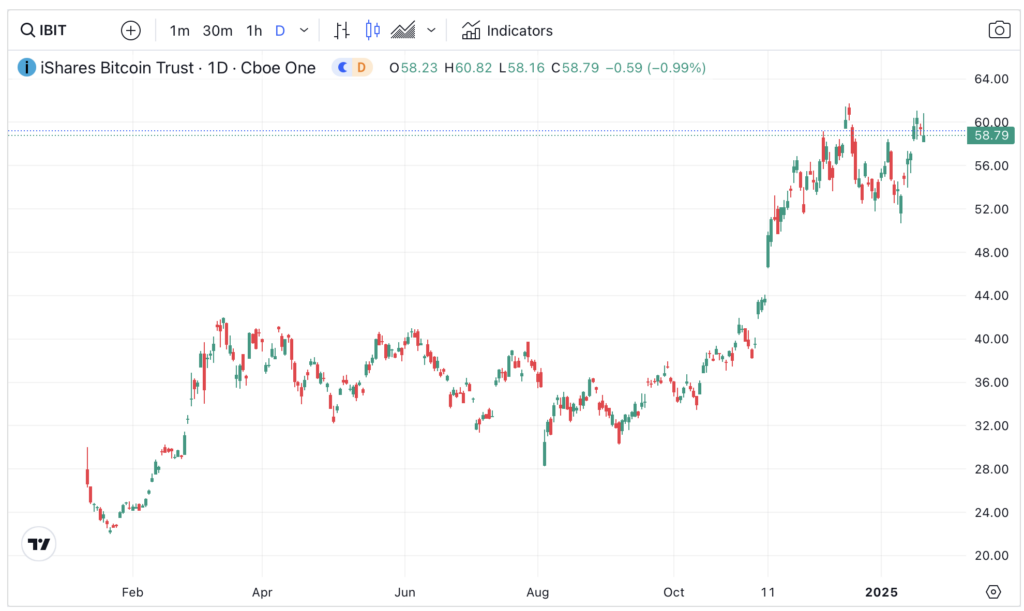
REITs
REIT is the acronym for a Real Estate Investment Trust (REIT). Launched in 2007, REITs have become a significant sector in the UK. You can buy and sell REITs just like any other listed companies on the London Stock Exchange. There are 48 REITs in the LSE (see full list here) – and one of the largest list REITs is Land Securities (LAND).
REITs offer several advantages for investors:
- Access – REITs offer investors access to a wide portfolio of commercial and residential properties at a corporate level. REITs have experience and knowledgeable teams to manage properties professionally on your behalf – and save investors the hassle of direct property ownership.
- Income – REITs offer the prospect of a stable income. Remember that a REIT distributes most of its property-derived income to shareholders.
- Positioning – You can trade major REITs throughout a trading session. Liquidity is good on a FTSE 100 REIT. Investing £1,000 or half a million in a REIT will earn a proportional amount of income. Unsurprisingly, many pensions and large investors are increasingly reaching to REITs for their dividend yields.
The downside is that REITs’ share prices can fluctuate like any other stock. They can go up or down depending on current supply and demand. More importantly, macro conditions will determine the valuation of REITs. High-interest rates are capping the values of property due to the more expensive debt financing. Segro (SGRO:LSE), for example, exhibits this classic cyclical behaviour over the years (see below). Prices soared during benign macro conditions, only to surrender much of these gains in a difficult economic period.
WIll 2025 offer a better year for REIT investors? Not until borrowing costs start to come down, in a sustained way. Property value rises on cheaper capital costs; and vice versa. With ‘stagflation’ becoming a reality in the UK, investors are naturally taking a cautious stance here. There will be opportunities no doubt, but has to tread carefully.
Bonds
Bonds suffered one of their worst price performances during 2022-2023, and have not really recovered since.
Given this bearish backdrop, an important question stares squarely at investors: Are bonds still worth buying at all? In early part of the year, for example, investors snapped up gilts when prices plunged. A lot of this buying has to do with taxation (eg, capital gain tax).
Bonds are an essential part of the investment landscape and have an important place in a diverse portfolio, primarily for three reasons:
- Interest rates are high in 2025. This means investors are compensated for the increased risk. For example, 1-year gilt yields are near 4.5 percent. This is not a bad yield.
- Inflation rates are lower. This means the real return (nominal minus inflation) from bonds is nearing positive.
- Bond prices fluctuate. Astute investors can take advantage of these fluctuations to buy bonds at a cheap price and benefit from any fall in inflation or interest rates.
The problem for bond investors in 2025 is whether central banks will cut rates as anticipated. If inflation numbers come up stronger than expected, in a sustained upward trajectory, then policy makers will possibly turn around and raise interest rates. This is a major risk.
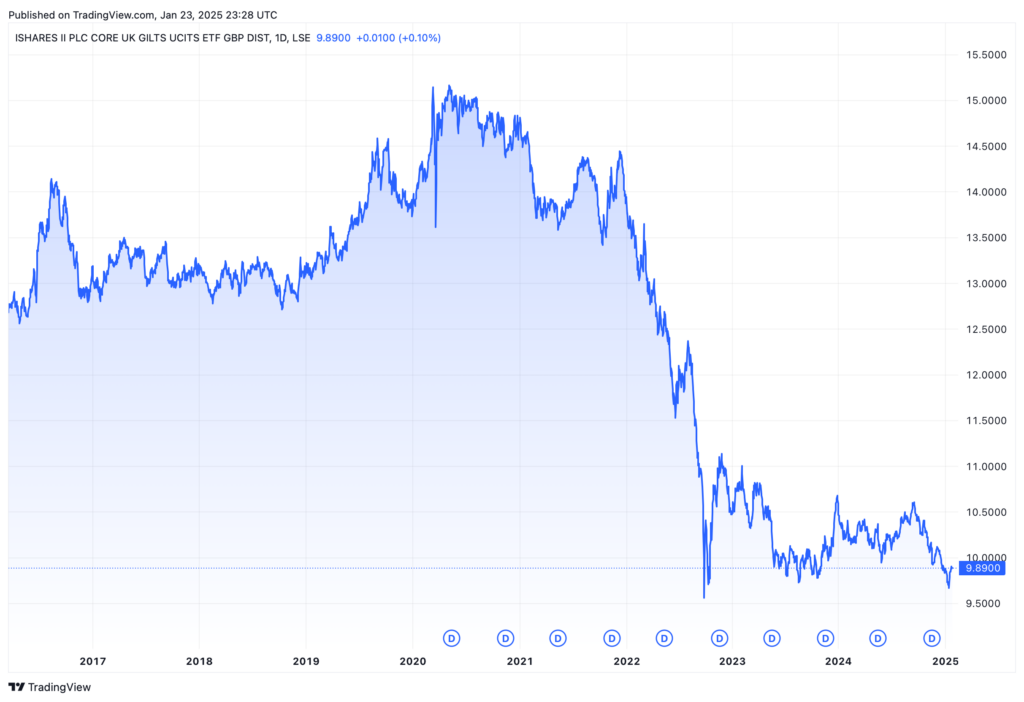
Commodities
- Diversification – from other asset classes such as bonds and stocks, since commodities move differently and are impacted by different factors.
- Superb returns – especially when you get the timing right. When a commodity shortage occurs, prices can go ballistic over a short period of time (eg, Cocoa and Coffee, see below))
- Commodities as Hard Assets – commodities have an important place in portfolio during inflationary periods (like now). Gold is valued near $3,000 for this reason.
- Secular demand for many commodities – due to the ongoing industrialisation, infrastructure upgrades and green economy transition in many countries.
In the past, you could only gain exposure to commodities via physical ownership. Nowadays, you can buy commodities through futures, options, ETFs, spread betting, or through miners.
In 2024, one of the best performing commodity sectors was uranium. Many uranium miners have soared in response to the possibility of smaller nuclear reactors (SMR). Stocks like Nano Nuclear (NNE:US) or NuScale Power (SMR:US) are off to a great start to the year already (see below).
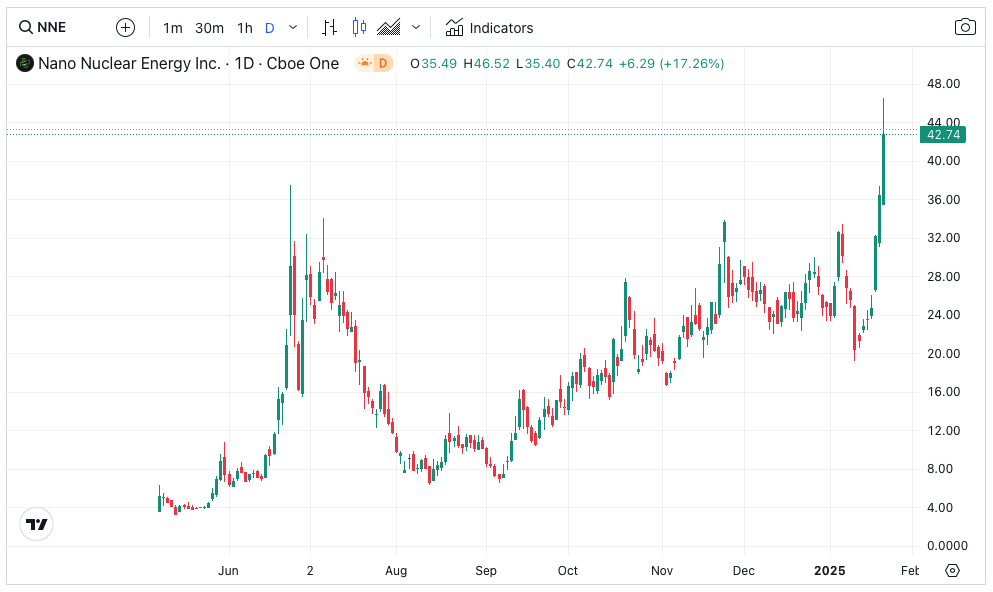
Some commodities will perform differently over time – just like how some equity sectors diverge. In 2022, for example, oil and wheat were a few of the best-performing commodities due to the war in Ukraine and geopolitical tensions in the Middle East. Now, coffee is all the rage (see below). Breakfast is about to get more expensive!
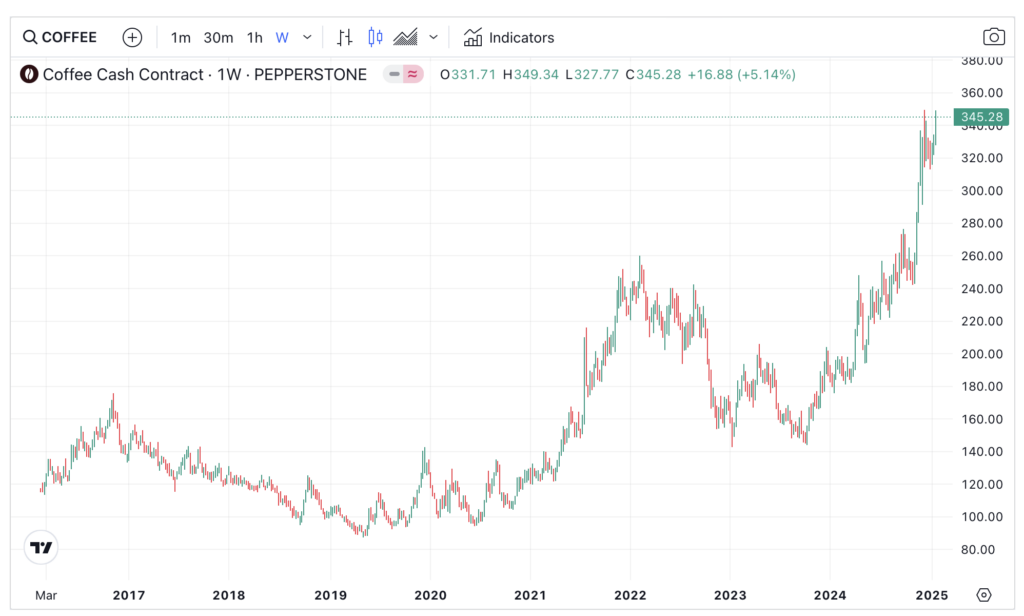
IPOs & New Issues
As the bull market prolongs, many new and exciting companies will take advantage of that by going public. In the UK, an interesting stock that IPO last year was Raspberry Pi (RPI:UK). Prices are up 70 percent since IPO.
What are the advantages of buying into new securities?
- New exciting sectors. A newly-listed company is often young and dynamic. You can buy into these high-growth companies for a fraction of what they will be worth in the future.
- Untapped potential. A company uses funds raised from the IPO to invest in new corporate expansion. In time, these investments bring revenue growth.
- Booming industries. New sectors need funds to grow. That’s why these companies list in public markets to attract more investors. You can get a piece of the action this way.
But like any other investments, the downside of investing in new securities is that these companies are untested. They may or may not survive the next economic downturn. Corporate longevity is unknown. Another point worth remembering is that IPOs are more vibrant during a bull market, when investors are more receptive to new positive ‘stories’. More often than, wildly enthusiastic investors overpay for IPOs.
Look at one ETF that invests in IPOs (ticker IPO:US). Its price action succinctly captures the rise and fall of the investor sentiment during the covid boom. It is now trending upwards steadily.
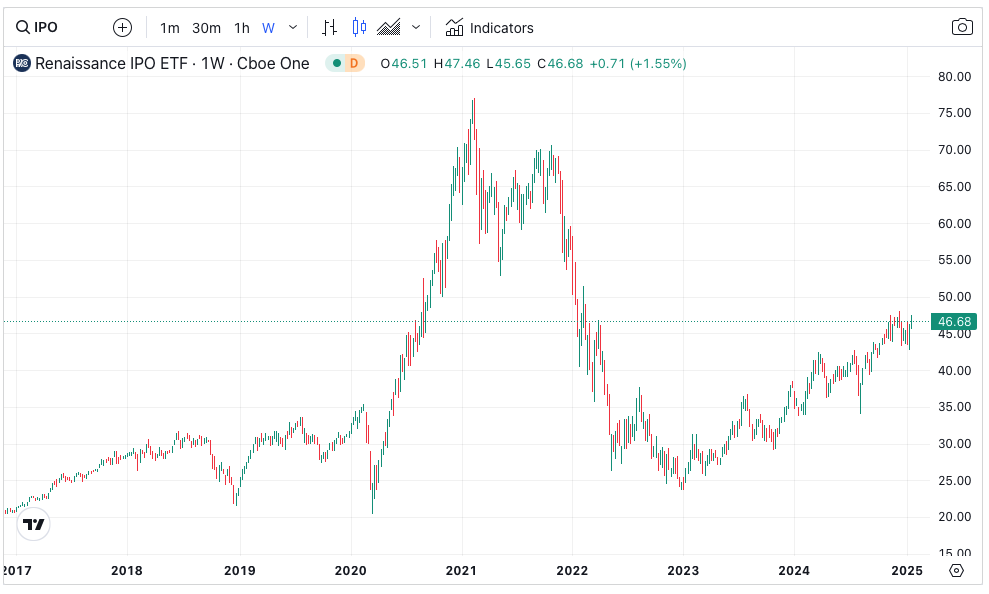
Emerging Markets
Investing in emerging markets is a popular diversification strategy. This is because these markets (eg India, Indonesia or Vietnam) have only begun their industrialisation process.
Emerging markets are popular because of:
- Long-term growth story – especially when we look at countries like India (population=1.4 billion, worldometers.info) or Indonesia (population=277 million).
- Ongoing industrialisation – and sooner or later this will turn into a large fantastic consumer market
- Volatile pricing – which create opportunities for attentive investors to pick up bargains, es as fear permeates
Financial Stocks
Financials stocks have had a hard time since 2008. But they seem to be making a great comeback.
2024 was a great year for many bank stocks. What is normally good for banks, is good for the economy. So strong momentum behind the sector, 2025 could be a positive year for financial institutions.
Why should you buy banks?
- Sturdy balance sheets. Many banks have strengthened their balance sheets since 2009. This may help them to weather the current economy turbulence well.
- Good shareholder returns. Banks have been buying back their own shares, on top of regular dividends.
- Positive charts. A good number of bank stocks are sitting near new all-time (or cyclical) highs. Barclays (BARC:UK) is nearing 300p. JP Morgan (JPM:US) is now valued at $750 billion. Even French banks like BNP (BNP:FR) or Credit Agricole (ACA:FR) are near multi-year breakout, as is Santander (SAN:SP). Even Citigroup (C:US), the perennially underperforming bank, is about to run though the massive ceiling at $80 (see below). iShares Global Financials (IXG:US) just took out the 2007 highs after an 18-year gap.
Therefore, investors may well pay attention to the sector as the charts are telling us that the economy could be doing better than expected.
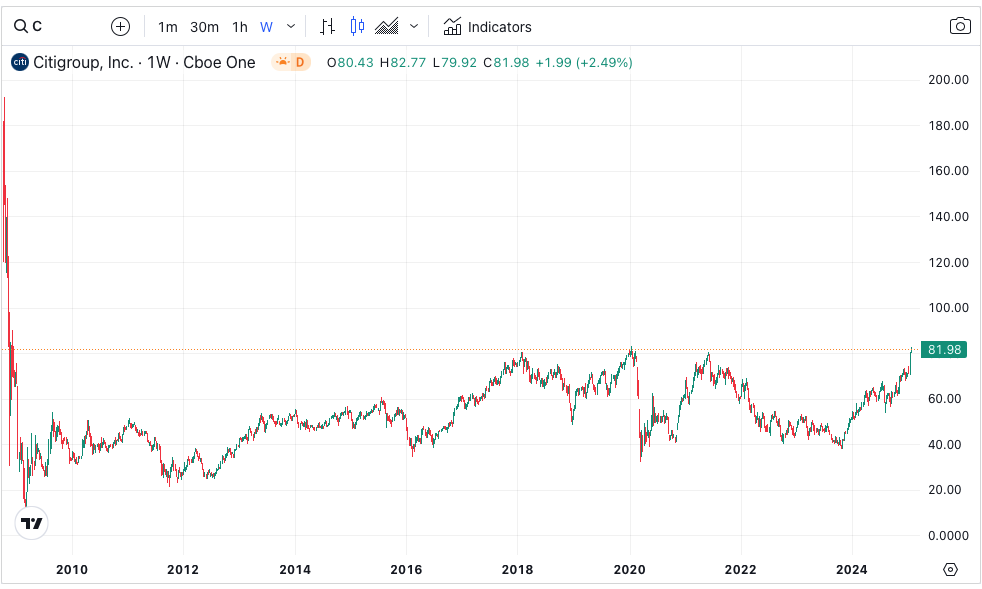

Jackson is a core part of the editorial team at GoodMoneyGuide.com.
With over 15 years of industry experience as a financial analyst, he brings a wealth of knowledge and expertise to our content and readers.
Previously, Jackson was the director of Stockcube Research as Head of Investors Intelligence. This pivotal role involved providing market timing advice and research to some of the world’s largest institutions and hedge funds.
Jackson brings a huge amount of expertise in areas as diverse as global macroeconomic investment strategy, statistical backtesting, asset allocation, and cross-asset research.
Jackson has a PhD in Finance from Durham University and has authored over 200 guides for GoodMoneyGuide.com.
To contact Jackson, please ask a question in our financial discussion forum.

